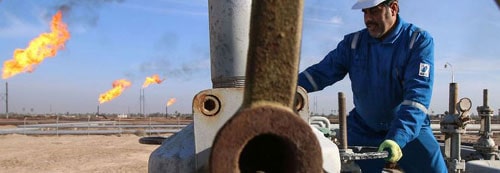How to Trade Commodities
Crude oil and natural gas are the most popular commodities. They generate significant trading volume every day, providing numerous trading opportunities for online traders. Whether it’s WTI, Brent, or NATGAS, energy commodities are all quoted in US dollars.
When trading energy CFDs, the exchange rate against the US dollar is a key factor to keep in mind. Our commodities offer both a “buy” and “sell” price. The difference between the buy and sell prices is called the “spread.”
When trading energy CFDs, the exchange rate against the US dollar is a key factor to keep in mind. Our commodities offer both a “buy” and “sell” price. The difference between the buy and sell prices is called the “spread.”

Basic knowledge of crude oil
Crude oil is used in manufacturing, transportation, and energy production. Its variable supply and limited storage capacity significantly impact the global economy. Crude oil is a popular commodity among traders, subject to constant price fluctuations due to its constantly fluctuating supply and demand, and is highly liquid.
You don’t need to handle large quantities of crude oil to trade in the oil market. Most oil and gas trading is conducted through futures.
Types of Crude Oil Trading
Crude oil, like stocks, is traded on exchanges. However, unlike stocks, it is traded using crude oil benchmarks. Crude oil produced around the world is not always identical, and crude oil benchmarks allow traders to quickly identify the quality and location of the oil they are buying or selling. The spot price of crude oil represents the cost of buying or selling crude oil for immediate or on-the-spot delivery (rather than at a set date in the future). Therefore, while futures prices reflect the market’s belief in the value of crude oil at a future expiration date, spot prices reflect its current value.


West Texas Intermediate (WTI)
This is a type of crude oil produced in the United States, also known as Texas Light Sweet. The so-called “light” refers to its lighter density than most OPEC crude oils, and the “sweet” refers to its lower sulfur content.
Brent Crude Oil (BRENT)
Brent, also known as “Brent,” is a type of crude oil produced in the North Sea. It is also described as “light, sweet crude oil,” just like WTI.
Factors Dominating Crude Oil Prices
Crude oil is one of the most traded commodities in the world, and new changes occur in the crude oil market every day.
Extraction and refining
The extraction and refinement of crude oil is expensive. Because oil reserves are located deep underground, extracting crude oil from the ground requires considerable effort. Any technological advancements or setbacks in the extraction process have a direct impact on crude oil prices.
Consumption and demand
The largest consumer of crude oil is the United States, followed by Japan, China, and European industrial nations such as Germany and the United Kingdom. These countries have a large demand for crude oil in their industrial and economic sectors, and therefore, their demand influences global crude oil prices.
Availability and supply
Regardless of supply fluctuations, crude oil availability is influenced by political and economic factors. Rising inflation, unemployment, and poverty rates can lead to lower consumption levels, making some products unaffordable for those affected. Political unrest and insurgency can also lead to reduced crude oil imports and the smuggling of imported commodities.
Natural disasters and accidents
Natural disasters such as earthquakes and hurricanes are unpredictable events that can hinder and delay crude oil production due to damage to drilling sites and refineries. Fires and mechanical failures can also cause production delays due to the time required to recover. These delays can reduce crude oil supply and lead to higher prices.

